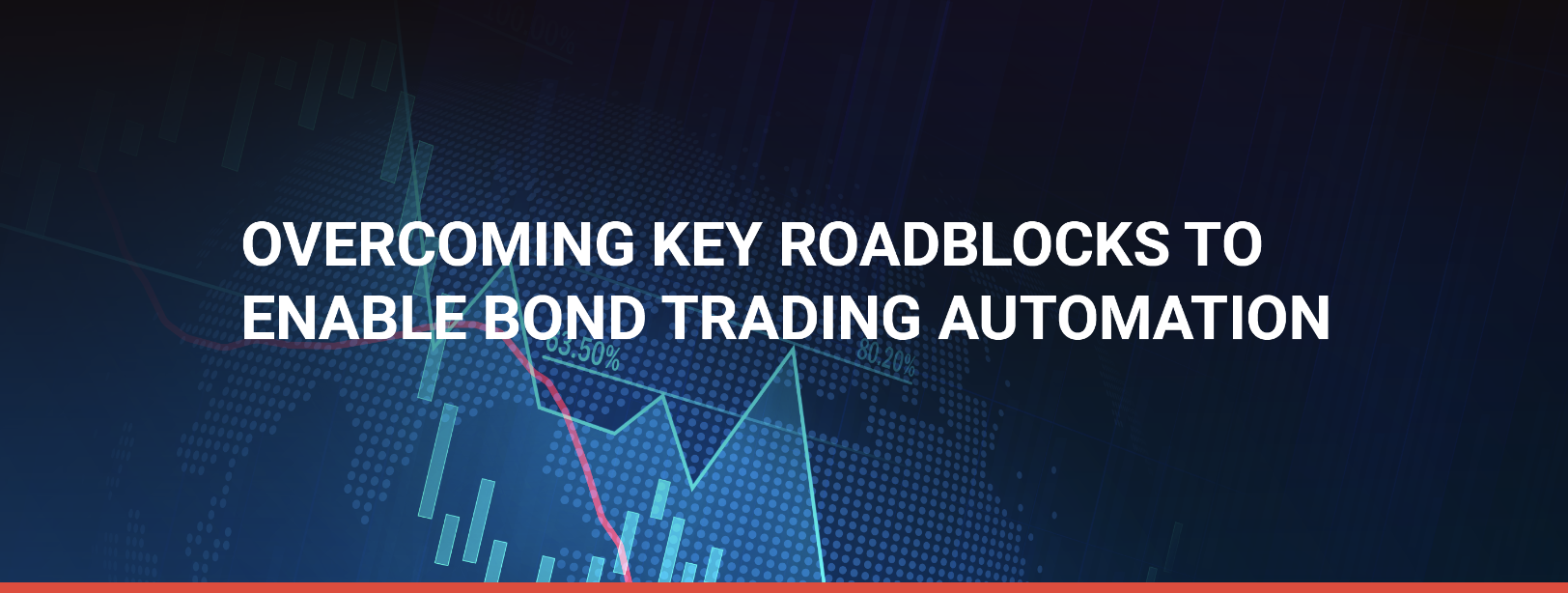

“Over the next decade we’re going to see an incredible evolution of artificial intelligence,” says Vuk Magdelinic, CEO of Overbond, a fixed income AI analytics firm. “The ’90s were the internet age, the aughts the age of cloud and the ’10s the age of social media. The ’20s will be the age of AI.”
Source: Overbond
And yet, in 2021, roadblocks remain to reaching the next stage of adoption of automation and AI in the fixed-income markets.
Although there’s been significant growth in electronic trading in the fixed-income markets over the past 20 years, structural issues exist that make automation difficult to fully apply to these markets — and they still have a long way to go.
The Challenges
One of the greatest challenges to automation is the diversity of fixed-income issues. A single company may have several bond issues outstanding, each with unique coupons, times remaining to maturity, or other features. And the time to maturity and liquidity of these issues change as they age. The illiquidity of bond issues is another challenge; many bond issues are small in size and not widely held and, as a result, they trade rarely, if at all.
The bond market, in part due to these structural issues, remains an over-the-counter (OTC) market, where participants trade directly between participants — for instance, buy-side clients trade with dealers. Without the centralization and transparency of an exchange, an OTC market is more difficult to automate, and this will continue to present a major roadblock. And any move away from an OTC market is likely to be slow, if it’s possible at all.
Many bond market participants still prefer to deal on the phone during difficult market conditions. During the height of the first wave of the pandemic, “electronic trading in the European corporate bond markets broke down as participants resorted to voice trading,” according to The European investment-grade corporate bond secondary market & the COVID-19 crisis, a May 2020 report by the International Capital Market Association.
This wasn’t due to technological failure, but rather “because the market became too volatile and too illiquid for dealers to risk providing pricing across electronic platforms,” according to the report. However, e-trading volumes remained high, reaching record levels at times, even as the percentage fell versus voice.
The Solution
Given continued uncertainty around surges in the pandemic and the pace and scope of vaccination, it’s possible that markets could once again become too volatile or illiquid for traders to feel comfortable pricing on electronic platforms. While we could see this in investment-grade markets, it’s even more likely to occur in the high-yield market. This has the potential to slow growth in the percentage of trades executed electronically in 2021.
Even with the increases seen in electronic trading, volume is spread across multiple competing trading venues, without any single venue or data source providing enough coverage and precision for traders to access true liquidity in the price discovery process. Access to universal, quality data is one of the greatest roadblocks to automating the bond markets.
Because participants need to gather data from several sources, they don’t always trust the pricing they see. This is particularly true for buy-side participants. This lack of trust in pricing is one of the reasons most traders prefer to negotiate large trades over the phone. This, of course, then contributes to the problem of data aggregation — the trades you’d most want to be recorded in real-time on an electronic platform are not recorded, so the data is less robust, which leads to continued uncertainty around electronic trading.
Converting these remaining voice trades to electronic platforms will be challenging without improved data and transparency, which has the potential to slow the progress of automation.
Improving the data available to participants would help drive further adoption of automation. But with no universal data provider or transparent data such as an exchange, creating a useable data set falls to the firm. But aggregating, cleaning, normalizing and de-duplicating data is extremely difficult and resource-intensive. Several firms that have taken on this project internally have, due to the complexity and cost, abandoned it. Outsourcing is a more practical solution for many firms.
“Currently, the only solution in the marketplace that shows which bonds have traded and at what prices across various trading venues that also includes the OTC trading volumes is client-side data aggregation. This involves aggregating data feeds from various providers internally. Up until a few years ago, it wasn’t possible to process, map or normalize all these different data feeds in real-time. Today, AI analytics makes this possible,” Magedlenic says.
To meet the challenge of improving data for fixed-income market participants, Overbond has developed an AI tool for client-side data aggregation, which aggregates data feeds from various providers such as composite data feeds, transcribed data from chats and voice, records of past trades in order management systems and post-trade regulatory feeds.
Just a few years ago, it would have been impossible to provide real-time pricing, but now Overbond uses serverless cloud and parallelization to do just that. In the absence of a centralized data source, firms employing client-side data aggregation will find they have a significant advantage over their competitors — helping them overcome the key roadblocks to bond trading automation.
About Overbond
Overbond specializes in custom AI analytics development for clients implementing trade automation workflows, risk management, portfolio modeling, and quantitative finance applications. Overbond supports financial institutions in the AI model development, implementation, and validation stages as well as ongoing maintenance.
Contact:
Vuk Magdelinic | CEO
+1 (416) 559-7101
Vuk.Magdelinic@Overbond.com
Adam Anozy | Sales Associate
+1 (647) 973-4391
Adam.Anozy@Overbond.com


